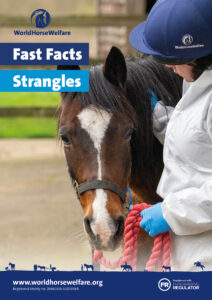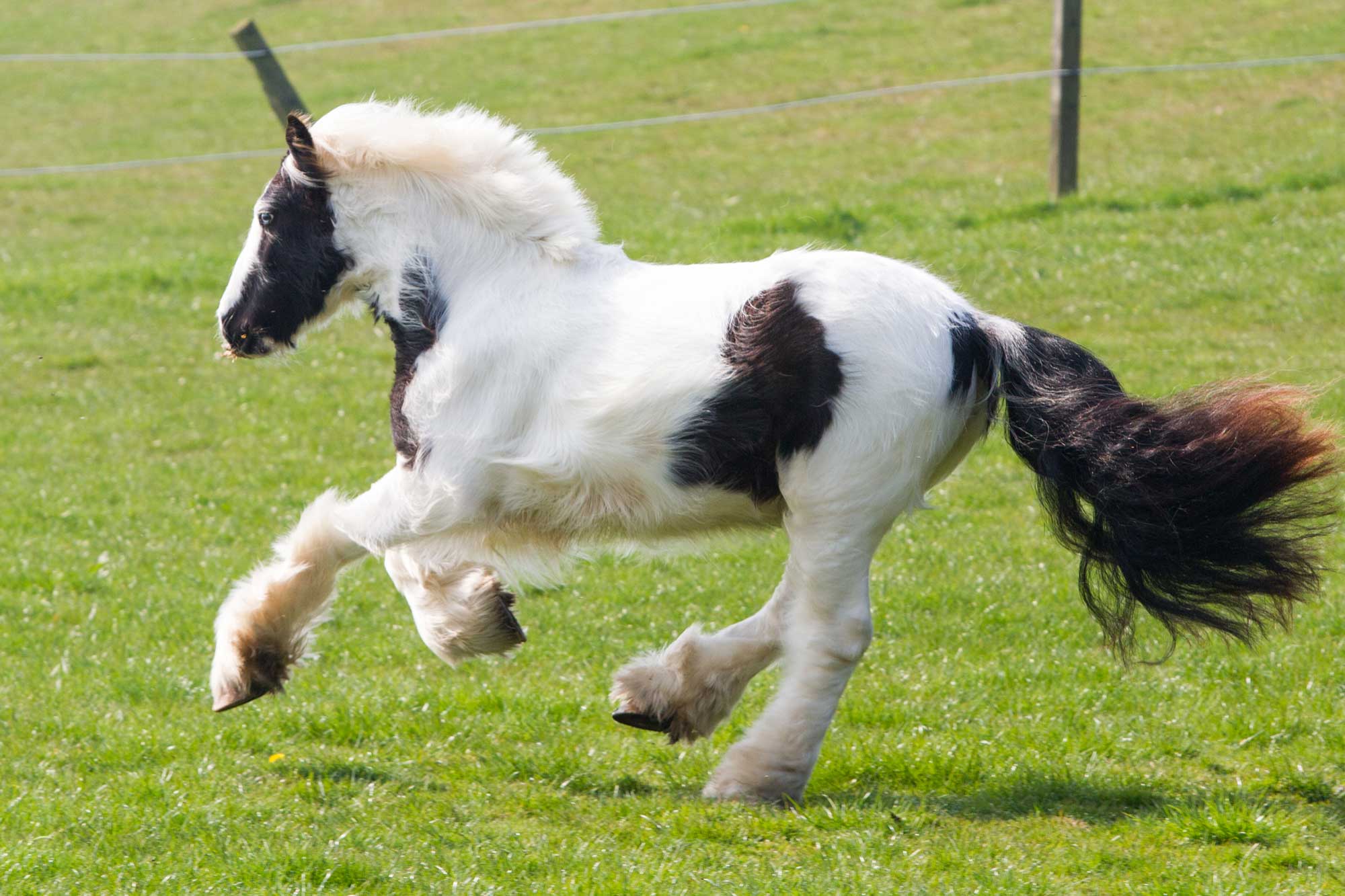Strangles is a highly contagious bacterial infection that affects horses, ponies, donkeys, and mules. While it’s not widespread in the UK, it is more common in horses that have been neglected or are in poor health. The risk increases when horses mix closely, such as during transport or in shared yard spaces.
Strangles is caused by Streptococcus equi bacteria and mainly affects the respiratory tract and the lymph nodes in the head and neck. In some cases, the bacteria can remain hidden in a part of the eustachian tube called the guttural pouch, allowing the horse to become a silent carrier without showing any symptoms.
What are the symptoms?
Horses with active infections may show:
- Fever (high temperature)
- Loss of appetite
- Depression or dullness
- Nasal discharge (often thick and yellow)
- Swellings or abscesses around the head and neck
- Difficulty swallowing or breathing (in severe cases)
Horses that are carriers may appear healthy but can still silently spread the infection to others.
How does strangles spread?
- It spreads via nasal discharge, saliva, or pus from abscesses.
- Strangles requires direct horse-to-horse contact or contaminated surfaces (buckets, tack, hands, clothing).
- It’s not airborne.
Why are World Horse Welfare’s farms at particular risk?
World Horse Welfare has four rescue and rehoming centres, meaning we care for a large and constantly changing population of horses. Many of our horses come to us due to neglect, abandonment, or poor welfare situations, and often with unknown medical histories.
Every year, around 350 equines arrive in our care, some in poor condition or with underlying health issues. The risk of infectious disease is naturally higher than in a private yard or a small livery yard. That’s why we have strict biosecurity protocols in place to help prevent, detect, and manage strangles.
Biosecurity is a top priority at all our farms to protect both our resident horses and those being rehomed. Our approach includes:
- Quarantine for all new arrivals – Every horse is kept separate and monitored for signs of disease before joining the herd.
- Routine health checks – Temperature monitoring helps us detect infections early.
- Rapid isolation – If a horse shows symptoms, they are immediately isolated and managed under strict biosecurity conditions.
- Controlled movement – We suspend horse movements if we detect a case, reducing the risk of spread.
- Strict hygiene protocols – Separate equipment, disinfecting facilities, and protective clothing help limit cross-contamination.
Strangles Myth-busting
Myth: Strangles is a death sentence.
Fact: Most horses make a full recovery with proper care, though some may take longer than others.
Myth: Strangles can be passed to humans or other animals.
Fact: Strangles can’t infect humans—it only affects equines.
Myth: A yard outbreak means poor management.
Truth: Strangles can occur anywhere—even in well-run yards. The key is early detection and responsible handling.
Myth: I hired the arena at a World Horse Welfare rescue and rehabilitation centre recently, so my horse is definitely at risk.
Fact: The risk is negligible, especially if your horse had no direct contact with an infected horse. Our biosecurity measures help keep visitors’ horses safe.
What can horse owners do to minimise the spread of infectious diseases?
- Know the symptoms to look out for and take your horse’s temperature regularly to spot signs of infection early.
- Avoid sharing feed buckets or equipment between horses.
- Wash hands if handling multiple horses, especially new arrivals.
- Follow biosecurity advice when visiting any yard, show, or event.
Strangles Fast Facts

This fast fact sheet includes more information on:
The cause and symptoms of strangles
Treatment and biosecurity procedures
Risk management
Popular advice in Health

Mites: how to treat them in horses
Find out how our experienced teams tackle this itchy problem in affected horses and ponies.

Sweet itch
Sweet itch is one of the most common allergic skin diseases affecting horses in the UK - learn how to prevent and manage it.
Other advice categories
All webinar categories:
Call our Advice Line
+44 (0)1953 497 238Not found the advice or answer you were looking for here? Then our Advice Line is available during office hours, or you can email us on education@worldhorsewelfare.org to let us know what topics you were looking for.


